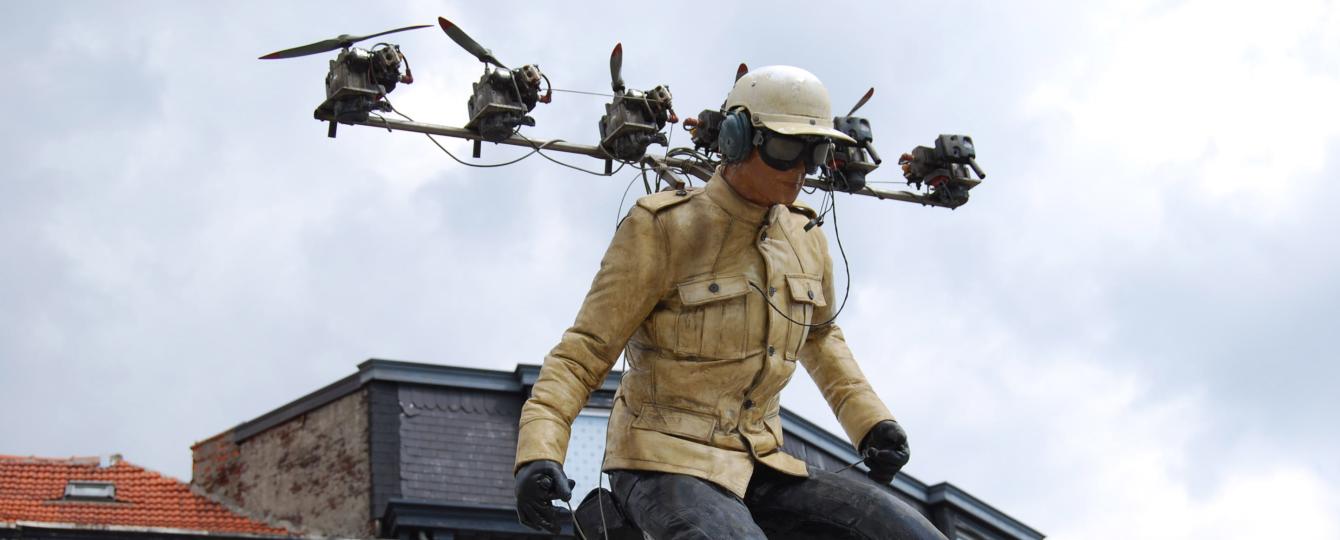What is the Antwerp Public Art Collection?
The Antwerp Public Art Collection comprises all the artworks, statues and monuments in public space that are part of the city’s art heritage. This means that all the pieces in the collection are, at least in part, purchased or produced using public funds or have been donated to the city. As such, it contains artworks that belong to all of us and which can be viewed day and night.
The Antwerp Public Art Collection exists in the liminal space between movable and immovable heritage: it is part of the texture of the city itself. Sculptures and monuments are not only often placed in a fixed location, but also define that location and thereby give meaning to our communal space.
The Antwerp Public Art Collection comprises more than 250 artworks and includes both historical sculptures and monuments as well as modern and contemporary artworks. It does not include street art, cartoon murals, poetry walls, artworks that are inseparable of the architecture of municipal buildings, temporary initiatives by third parties or privately owned artworks displayed in public space.
A major part of the collection is devoted to statues and monuments that depict the history and folklore of the city of Antwerp. These include painters such as Rubens and Teniers, writers such as Conscience and Van Ostaijen, heads of state and mayors, and fictitious characters such as Lange Wapper.
It has to be acknowledged that the profile of this collection is currently not diverse or inclusive, neither in terms of the persons represented nor in terms of artists. The Antwerp Public Art Collection is dedicated to researching these matters, to actively question those issues which in the past were considered self-evident but are now viewed differently, and how the collection can in future be expanded in a more inclusive and socially representative way. Unlike the Middelheim Museum collection, which is founded on the premise of the artistic autonomy of the museum space, the Antwerp Public Art Collection is developed on the basis of an intermediary role between the city of Antwerp, which commissions works, on the one hand, and artists, institutions, organisations, associations and citizens on the other. The Antwerp Public Art Collection is assembled and managed in the interests of society and the shared urban space. In addition, the collection is developed on the basis of a long-term perspective: permanent artistic interventions in the city are not only for the enjoyment and contemplation of today’s inhabitants, but also for future generations.
The high visibility of this collection means it is able to instigate public debate about the societal appreciation of or concern about specific works. A collection of art in public space inspires and stimulates the expression of more and various opinions on how people relate to a particular work in the collection.
The Antwerp Public Art Collection considers it its task to enter into a long and sustained process of active looking, listening, questioning, learning and development. In this process we want to actively and critically study which normative structures and practices have shaped the city’s artistic heritage, and this together with experts from outside the organisation, with colleagues and with the public. In this way we can create a common awareness about which historical and other moments and stories we represent in our city, based on the conviction that modern and contemporary art (the ‘newest heritage’) defines the cultural legacy for the generations to come.
An international, professional frame of reference is employed for the Antwerp Public Art Collection, which requires a tailor-made collection policy. An appreciation of the historical heritage is combined with the aim of creating a prominent place for contemporary art (including sculpture) in the city.
Information on and knowledge about the collection is gathered by means of archive research, interviews with artists and thematic research projects. This information is made accessible to the inhabitants, visitors and art professionals via digital and analogue channels of communication, a collection database (soon online) and temporary projects in which specific works or clusters of pieces from the collection are given a closer look.
Acquisitions and donations
There are several ways through which the collection can grow: an artist may be asked to create a new work commissioned by the city, often for a particular location, or an existing work may be purchased or donated. As a municipal department, the Antwerp Public Art Collection also collaborates regularly with the local districts, which if so desired can be advised and guided in instigating new commissions. The Antwerp Public Art Collection aims for a sustainable and high-quality development and distribution of the collection.
Maintenance and restoration
The Antwerp Public Art Collection manages the maintenance of the works in the collection. This means that it takes active care of the sculptures and monuments makes sure they are in good condition and do not fall into disrepair. A specialised cleaning crew sees to it that the artworks in the city are clean and tidy all year round. The Antwerp Public Art Collection, in cooperation with other municipal departments, also supervises any necessary restorations of the many historical monuments and sculptures in the city.
Only those works part of the Antwerp Public Art Collection are maintained by the Antwerp Public Art Collection - Middelheim Museum.
If you have any comments or questions about the maintenance of an artwork or monument in your neighbourhood, send a mail to kunstindestad@antwerpen.be.
Advisory committee
The Antwerp Public Art Collection committee provides artistic and technical advice to the city council regarding the expansion of the Antwerp Public Art Collection and other matters concerning art in public space. This committee also advises on district council projects, citizens’ initiatives and private art projects in public space in Antwerp. The members of the committee are the director of the Middelheim Museum, the curator and the collection manager at the Antwerp Public Art Collection, representatives of the municipal Department of Urban development, AG VESPA, the Chief Municipal Architect and external advisors.


